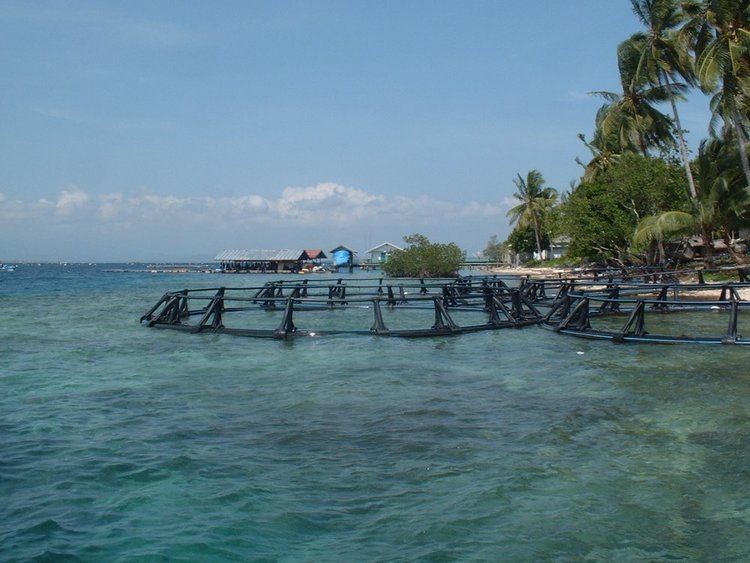Location South East Asia Area rank 52nd Highest point Binaiya Area 17,100 km² | Archipelago Molucca Islands Highest elevation 3,027 m (9,931 ft) Population 434,113 (2010) Max length 340 km | |
 | ||
Seram island maluku indonesia best travel destination
Seram (formerly spelled Ceram; also Seran or Serang) is the largest and main island of Maluku province of Indonesia, despite Ambon Island's historical importance. It is located just north of smaller Ambon Island.
Contents
- Seram island maluku indonesia best travel destination
- Map of Seram Island Maluku Indonesia
- barondamaluku ora beach heaven in seram island
- Geography and geology
- Ecology
- History
- Administration
- Religion
- Economy
- References
Map of Seram Island, Maluku, Indonesia
barondamaluku ora beach heaven in seram island
Geography and geology
Seram is traversed by a central mountain range, the highest point of which, Mount Binaiya, is covered with dense rain forests. Its remarkably complex geology is because of its location at the meeting of several tectonic microplates, which has been described as "one of the most tectonically complex areas on Earth". Seram actually falls on its own microplate, which has been twisted around by 80° in the last 8 million years by the relatively faster movement of the Papua microplate. Meanwhile, along with the northward push of the Australian Plate, this has resulted in the uplift that gives north-central Seram peaks of over 3000 m. On the island are important karst areas. In the mountains near Sawai is the cave Hatu Saka, currently the deepest cave in Indonesia (-388 m). In Taniwell district, on the north coast, is the underground river Sapalewa, one of the largest underground rivers on the planet.[2]
The population of the island in the 2010 Census was 434,113 people, administered among 3 regencies, Maluku Tengah Regency had 170,392 people on Seram island itself and 191,306 on the lesser islands (majority on Ambon Island), the entirety of Seram Bagian Barat Regency and Seram Bagian Timur Regency.
Ecology
Seram Island is remarkable for its high degree of localised bird endemism. From the 117 species of birds on the island, 14 are endemic, including the eclectus parrot, purple-naped lory, salmon-crested cockatoo, lazuli kingfisher, sacred kingfisher, grey-necked friarbird and Moluccan king parrot.
The mammals found on Seram include Asian species (murid rodents) as well as Australasian marsupials. The montane area of Seram supports the greatest number of endemic mammals of any island in the region. It harbors 38 mammal species and includes nine species that are endemic or near endemic, several of which are limited to montane habitats. These include the Seram bandicoot, Moluccan flying fox, Seram flying-fox, Manusela mosaic-tailed rat, spiny Ceram rat and the Ceram rat, all considered threatened.
Saltwater crocodiles exist within some of the island's rivers, including the Salawai River.
In the eastern part of the island, Manusela National Park has been established in 1997, covering an area of 1,890 km² (11% of the island).
History
Most central Moluccans consider Seram to be their original ancestral home and it is still known colloquially as Nusa Ina (Mother Island). In the fifteenth and sixteenth centuries, Seram was generally within the sphere of influence of Ternate, although it was often ruled more directly by the Ternaten vassal state of Buru. The expedition of António de Abreu (as captain) and Francisco Serrão sighted and explored the entire southern coast of Seram in early 1512, for the first time for Europeans. Portuguese missionaries were active there in the 16th century. Dutch trading posts were opened in the early 17th century, and the island came under nominal Dutch control c. 1650. In the 1780s, Seram provided a key base of support for Prince Nuku of Tidore's long-running rebellion against Dutch rule. From 1954 until 1962 the island's mountain terrain was the scene of an armed guerilla struggle against Indonesian rule by the counter revolutionary Republic of South Moluccas movement led by Soumokil.
Administration
Seram includes three of the regencies within the province of Maluku. West Seram (Kabupaten Seram Bagian Barat), capital at Dataran Hunipopu, had a population (2003) of 140,657; and Eastern Seram (Kabupaten Seram Bagian Timur), capital at Dataran Hunimoa, had a population (2003) of 78,336. The Central Maluku Regency (Kabupaten Maluku Tengah), with its capital at Masohi, includes the middle part of Ceram, as well as some other smaller islands.
Religion
Seram has been traditionally associated with the animism of the indigenous Alfur (or Nuaulu), a West Melanesian people who reputedly retained a custom of headhunting until the 1940s. Today, however, most of the population of Seram today is either Muslim or Christian due to both conversion and immigration. Seram was affected by the violent inter-religious conflict that swept Maluku province starting in late 1998, resulting in tens of thousands of displaced persons across the province but after the Malino II Accord agreement tempers cooled. Seram has been peaceful for many years but towns like Masohi remain informally divided into de facto Christian and Muslim sections. Around 7,000 people belonging to the Manusela tribe follow Hinduism.
Economy
Copra, resin, sago, and fish are important products. Oil is produced in the northeast near Bula by CITIC Seram Energy who took over from KUFPEC (Indonesia) Limited in 2006. The Oseil oil field is located onshore in the northeast of the island in the Seram Non-Bula Production Sharing Contract area. The discovery well was drilled in 1993. As of end 2010 the Seram Non-Bula Block had estimated proven oil reserves of 9.7 million barrels. Most production comes from the Jurassic Manusela carbonate formation.
